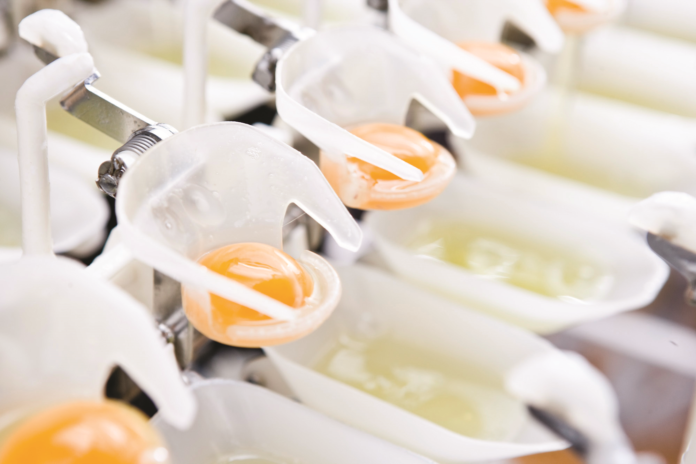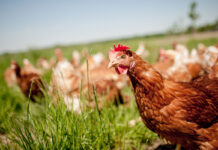
Egg quality is multi-faceted, with physical, functional, and microbial aspects contributing to egg quality. Research has shown that many factors impact egg quality including flock age and management, genetics, hen diet, housing design and management, as well as egg handling and storage. As laying egg production around the world shifts to more extensive housing systems, the impact of these housing systems on egg quality is unclear. Furthermore, the handling and storage of eggs have been shown to greatly affect egg quality. Understanding the factors influencing egg quality allows for higher quality eggs reaching consumers.
D.R. Jones and R.K. Gast – United States Department of Agriculture, Agricultural Research Service, Egg Safety and Quality Research Unit, Athens, Georgia, USA
Introduction
Eggs are an affordable raw agricultural commodity with a high nutrient density. Eggs serve a key role in diets around the world. Maintaining the quality of eggs is a worldwide concern. Generally, there are three types of egg quality: 1) physical, 2) functional, and 3) microbial. During this presentation, all three types of egg quality will be discussed and factors which influence egg quality characteristics will be explained. Understanding the types of egg quality, as well as factors impacting them, is integral to the ultimate goal of safe, high quality eggs reaching consumers.
Physical egg quality is defined by the visible characteristics of the egg. Exterior features such egg shape, shell texture, shell colour, cleanliness, and soundness are the first impression for consumers when selecting eggs for purchase. Interior physical egg quality factors include albumen height and clarity, as well as yolk colour, shape, size, and structure.
Functional egg quality describes the manner which whole egg, albumen, and yolk perform in a variety of food matrices. Eggs perform numerous functional properties in foods. Common functional attributes assessed for egg quality include foaming, coagulation, and emulsification.
Microbial quality of eggs considers both food safety and spoilage organisms. Eggs are a raw agricultural commodity with a shelf life dependent on initial flora present, handling, and storage conditions. Salmonella spp. are the historic foodborne pathogens associated with the consumption of eggs. Other spoilage organisms, including yeasts and molds, can impact the shelf-life of eggs.
Physical egg quality
The shape, texture, color, and soundness of the shell are the first egg quality factors consumers encounter. Shell quality provides aesthetics to the egg. It also serves as the first line of defense for microorganisms entering the eggs via horizontal transmission. A cracked egg is not only a potential loss of revenue due to lack of sale or store return, it is also a food safety risk since organisms can easily move through the crack to the shell membranes. Broken eggs with ruptured shell membranes (leakers) provide microorganisms direct contact with the egg contents and should not be consumed. In the US, leakers are considered a loss egg. The soundness of the egg also impacts the ability for intact eggs to reach end users. Furthermore, consumers have expectations as to the brightness of white shell eggs, as well as shade and consistency of colour for brown or coloured shells.
Once the egg is broken, the shape, clarity, and appearance of the albumen and yolk define the physical quality of the egg. The Haugh unit is utilised around the world as a quantitative measure for egg grade standards. In the US, Grade AA is defined as a Haugh unit score > 72; Grade A is a score > 60, but less than 72; and Grade B is a score less than 60. The Haugh unit is calculated based on egg weight and thick albumen height. The score has been questioned due to the calculation being weighted for a large size egg (56 g). In such cases, thick albumen height alone is utilised for reporting albumen and egg quality.
Yolk quality is monitored by determining yolk index and vitelline membrane mechanical characteristics. Yolk index is a calculation of yolk height divided by yolk diameter and is an indicator of yolk shape. As an egg ages, water migrates from the albumen into the higher solute yolk. This leads to a flattening of the yolk resulting in a lower yolk index value. Vitelline membrane strength and elasticity are physical properties of the membrane surrounding the yolk. The strength of the vitelline membrane is important not only to ensure the yolk remains intact during cracking and separation of the yolk and albumen fractions for cooking or the manufacturing of egg products, the membrane is also a barrier for microorganisms present in the albumen entering the nutrient rich yolk. The elasticity of the vitelline membrane indicates how much the membrane can deform before rupturing.
Functional egg quality
Eggs are highly functional ingredients in a variety of food matrices including, but not limited to, baked goods, sauces, candies and confections, desserts, snacks, meal replacement bars, and beverages. Functional characteristics can be provided by albumen, yolk, and whole egg. While there are many identified functionalities associated the eggs, three of the overarching categories are: foaming, coagulation, and emulsification.
Primarily, albumen and whole eggs can provide foaming capacity to a food matrix. The proteins in the albumen are particularly suitable for unfolding and interacting during whipping to entrap air, forming foams. During heating, the air and any moisture present will expand and provide leavening and lightness to the food product.
Whole egg, yolk, and albumen all assist with coagulation. Coagulation, generally due to heat exposure, is the binding or setting of food components. Coagulation is responsible for the texture created during the scrambling of eggs. Furthermore, coagulation allows for ingredients particles in quiches to be suspended with the dish. Coagulation is also responsible for the thickening achieved during heating of egg-containing puddings or sauces. Coagulation also accounts for the heat setting of foams such as meringues and sponge cakes.
Yolk, whole egg, and to a lesser extent albumen, are emulsifiers bridging the hydrophobic and lipophobic portions of a food matrix to aid in the creation of a stable emulsion. Eggs play a key role in the emulsification of mayonnaise and salad dressings, as well as ice cream bases, Hollandaise, and bearnaise, to name a few applications. Eggs also assist with browning and colour formation during cooking, adhering food coatings, and enhancing mouth- feel. The functional applications of eggs are endless, while also providing nutrient density and clean labels to the foods.
Microbial egg quality
Foodborne pathogens and spoilage organisms contribute to the microbial quality of eggs. Eggs can become contaminated via vertical transmission, as well as horizontal contamination. Salmonella Enteritidis is deposited inside the edible interior of eggs due to infected reproductive organs, although high frequencies of reproductive organ invasion by Salmonella do not always result in correspondingly high frequencies of egg contamination. Both the ovary and oviduct of laying hens can be invaded by S. Enteritidis, leading to bacterial deposition in either edible egg fraction. The abundant nutrients in egg yolk can support rapid microbial growth at warm temperatures, whereas albumen of fresh eggs contains antimicrobial compounds that limit iron availability and disrupt bacterial membranes. S. Enteritidis is generally deposited inside contaminated eggs in the albumen or on the vitelline (yolk) membrane. Eggs contaminated by S. Heidelberg, a common serovar in laying housing environments, have been implicated in occasional reports of human disease in the US. In Australia, sporadic egg-associated illnesses have been attributed to S. Typhimurium contamination of eggshells. In the US, there were Salmonella Enteritidis egg-associated outbreaks in 2010 and 2018, Salmonella Oranienburg in 2016, Salmonella Braenderup in 2018, and Listeria monocytogenes in hard-cooked eggs in 2019. Other salmonellae, including S. Kentucky in the US, are prevalent in commercial laying flock housing environments but have not been shown to cause egg contamination.
Pathogens other than Salmonella are also important for eggs and the egg production environment. Campylobacter spp. and Listeria spp. have frequently been detected in environmental swabs from a variety of hen housing systems. Additional studies have determined the flora present on the shells of nest run eggs is diverse.
Spoilage organisms must also be considered when discussing the microbial quality of eggs. Being a raw agricultural commodity, eggs are prone to rotting, especially if the eggs have been mishandled. Organisms which have been associated with the rotting of eggs include Pseudomonas, Acinetobacter, Proteus, Aeromonas, and Serratia. Fungi are also able to grow on the shell surface and between the shell and shell membranes.
Egg handling and storage
Around the world, eggs are handled and stored in diverse manners. The controlled washing of shell eggs for human consumption has been a point of debate for over 50 years. In the US, USDA Agricultural Marketing Service standards for the voluntary grading of shell eggs serve as the basis for the washing of shell eggs. Under these standards, eggs must be spray washed in warm water (32 °C or 11 °C warmer than the warmest egg), exposed to a sanitising rinse of 100-200 ppm chlorine or its equivalent, and be blown dry with high velocity, filtered air. Generally, caustic detergents are utilized in the wash water.
The washing of eggs has been a concern due to the potential of disturbing the cuticle of the egg. The cuticle serves as the first line of defense for the movement of water, air, and external microorganisms into and out of an intact egg. With the changes in flock management, hen genetics, as well as hen housing, modern research has produced conflicting results as to the impact of washing on cuticle integrity. Washing of shell eggs removes adhering matter, such as dust, feed, and fecal matter – all of which can harbour both pathogenic and spoilage microorganisms. Washing of consumer eggs enhances egg quality.
Prompt refrigeration of eggs has been shown to be a key factor in controlling the growth of Salmonella Enteritidis, other Salmonella spp., and many other human pathogens. For this reason, in the US, shell eggs are required to be under refrigeration (7.2 °C) within 36h of lay through distribution and retail. Refrigeration is also key in retaining product physical and functional quality characteristics. In a comparison of common egg handling and storage practices utilised around the world, it was determined that refrigeration had the greatest impact on retaining physical egg quality regardless of washing status.
Hen housing systems
Consumers draw conclusions about housing systems in part based on the quality of the eggs from housing systems available in retail. Extensive housing systems often have higher production costs, resulting in more expensive eggs. A consumer has an expectation of enhanced quality with the price premium. Several review articles have been published on the impacts of hen housing on egg quality. In many instances, studies conflict on the outcomes of egg quality due to housing. Karcher et al. (2015) illustrate the complexity of comparing hen production and egg quality amongst housing systems and the factors which can significantly influence outcomes.
Physical and functional egg quality influence market share and usage, for both consumers and food manufacturers. Many retailers, food service, and food manufacturers in the US and around the world have made pledges to convert to cage-free eggs, but little is known as to the impacts of extensive housing systems on egg quality – in particular egg functionality.
Outcomes of egg quality assessments conducted worldwide regarding hen housing have been inconsistent. Principal component analysis of egg quality and egg production in terms of hen diet composition and environmental temperature across commercial conventional cage, enriched colony cage, and cage-free aviary determined that many factors influence various egg quality parameters and the influence is often dependent on housing system. The effective collection of eggs from extensive systems impacts egg quality. Prompt refrigeration has long-lasting positive influence on all interior egg quality factors. Eggs laid outside of the intended egg collection area (mislaid eggs) may not be effectively collected and could be older when packaged. A comparison of hen genetic strains in cage-free aviaries found strains produced eggs of varying quality and quality declined at different rates during long-term cold storage. Egg grade standards are based on conventional cage eggs. Jones et al. (2014) determined that US federal egg grade standards are equitable for commercial conventional cage, enriched colony cage, and cage-free aviary produced eggs during long-term refrigerated storage.
Research has documented the changes in egg functionality during the extended cold storage of eggs. As egg production shifts to cage-free and food manufacturers are making cage-free commitments, there is limited knowledge on the effect of hen housing on egg functionality. A single study of retail eggs in Italy provided insight and retail egg studies limit the control of egg age and handling, which can impact egg quality. A variety of extensive systems have been developed including enriched colony cages (providing lower stocking densities for larger hen groups plus environmental enhancements such as perches, nesting areas, and scratching pads), cage-free aviaries (allowing birds to move freely among multiple open levels of enriched cage and floor areas within houses), cage-free barn, and free-range housing (offering greater opportunities for freedom of movement via varying degrees of access to outdoor forage or pasture areas). The numerous facility design features and management practices associated with each of these systems influence the environmental and flock persistence and transmission of pathogens such as Salmonella. A considerable body of research has assessed the effects of laying hen housing systems on important food safety parameters, but this work has generated no overall consensus to suggest that any one system is superior to others. Challenge studies have been conducted comparing conventional and enriched colony cages, but there has been limited ability to assess the impact of cage-free housing on infection and transmissibility, as well as egg contamination.
A high prevalence of Campylobacter spp. has been detected in both intensive and extensive hen housing systems. Jones et al. (2015, 2016) compared Campylobacter detection in conventional cage, enriched colony cage, and multi-tier cage-free aviary housing and found scratch pads, system wires, and flooring substrate to be environmental reservoirs. Listeria monocytogenes is an important foodborne pathogen, known to proliferate in refrigerated conditions. Listeria has been detected in the shell egg and egg products processing environment but information as to on-farm incidence or impact of housing systems on Listeria prevalence is limited. When hens have outdoor access (such as organic or free range), the environmental and egg flora are impacted. Mislaid eggs are defined as those which cannot be effectively, efficiently, or hygienically collected. These are often referred to as floor eggs, but may not always occur on the floor of an extensive housing system. Research has found that mislaid eggs have a higher likelihood of microbial contamination. Research has also found that cage-free systems, in particular cage-free aviaries, result in high levels of dust from hens foraging and dust bathing in the substrate. The increase in dust impacts egg safety and worker health.
Conclusions
Maintaining and enhancing shell egg quality requires a holistic approach to egg production, handling, transportation, and distribution. Much is known about conserving egg quality associated with conventional cage production systems. As world egg production shifts to a variety of extensive housing systems for laying hens, as well as changes in dietary formulations and laying hen genetic stocks, controlling egg quality can be challenging. It can be daunting to process the information or lack of information to make informed decisions. Producers do not have to face these challenges alone. Reach out to the multitude of resources available and in today’s virtual environment, it is even easier to receive assistance from anywhere in the world.
References are available on request
From the Proceedings of the APSS 2022

















